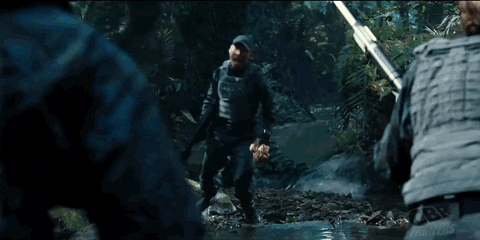KB Snatch and Dumbbell Snatch Training
At Garage Strength, we get emails all the time around sports performance. Athletes asking us how to become better football players, baseball players, soccer players, basketball players, wrestlers, and the list goes on and on. All the questions come back to being able to do the Olympic lifts. Access to bumper plates? Access to barbells? These questions are consistent because it is difficult to have a platform, a level concrete floor, bumper plates (which are expensive), or nice bars that spin and are designed for the weights to be dropped. It can be pricey.

Still, there are ways around that. Stuck at home training or at a global gym without a platform, there are still means to train like an Olympic lifter through different means of acceleration using an overload to reap the positive benefits behind the Olympic lifts. This brings up the key factor of using Olympic lifts for sports performance.
Learning how to have a hip extension, coordinate the hamstrings into the hip extension, with an upper-body that is extremely fast while teaching the body to how to have a very rapid action, as well as coordinate and absorb force properly are all big benefits behind the Olympic lifts. So how can we do this?
Let’s find out!
1. Dumbbell Snatch
The dumbbell snatch is one of those movements that can really teach the athlete how to be explosive from the ground up. Grab a dumbbell and hang it between the legs. Think about driving through the full foot with a long, long pull. Remember to explode as rapidly as possible before dropping under into the catch. Dropping into the catch creates a co-contraction in the shoulder making the shoulder more stable. From there, athletes can use the stretch-shortening cycle to trigger the next position in the movement. Make sure to do both sides for at least three to four reps. This will allow athletes to go heavy.
A lot of people when they first perform this movement, they stay up top. They pull and just stay up top like a muscle dumbbell snatch, which is also beneficial. But one of the biggest benefits athletes learn through Olympic lifting is finishing a pull and dropping. This movement pattern demands high levels of athleticism. People overlook this concept. The pull and drop are what really help the movement transfer over to sport.

We recommend doing this movement once a week for speed and once a week for speed. Complete five to six sets for three to five reps on each side. Take shorter rest between sets because the movement isn’t as heavy as a barbell snatch.
2. Kettlebell Cleans Or Dumbbell Cleans
Athletes can perform bilateral cleans or unilateral cleans. This is very similar to the dumbbell snatch. Now because athletes are using kettlebells or dumbbells hip contact is not made. This doesn’t mean that athletes don’t go through hip extension. Athletes need to make hip-extension.
When swinging the kettlebell, finish tall. Athletes need to get the elbows behind the trunk, shrug the kettlebell nice and tight, flip the weight aggressively, and absorb the force. Remember, it is important to have a big long finish, changing direction, absorbing force, and catching the weight in an athletic position.
Now if an athlete favors one side over another, do unilateral kettlebell cleans. Work the weak side first. Unilateral cleans will expose leaks in structural integrity.
Complete unilateral cleans once a week and bilateral cleans once a week. Complete five to six sets for three to five reps. And remember to be very, very aggressive with heavy weight. There is a difference between moving weight fast and moving heavy weight fast. This means that moving the heavy weight fast will transfer better to other sports because not only is an athlete moving their body but they are trying to move opponents. This is where the rate of coordination transfers really well to the athletic realm.
3. Dumbbell Jump
This movement is more complicated from the perspective of overload on the joints. Experience athletes will find this movement easy. Still, make sure the athlete can squat well. Meaning, good squat depth, mobile ankles, back, and knees, and solid trunk control.
The dumbbell jump is a fantastic way to overload jumps. This gives an overload on the eccentric portion as well. Jump in place holding a dumbbell for height. Make sure that as soon as the feet ground and the quarter squat position is hit, jump again. The repetitive movement will light up the nervous system to recruit muscles rapidly.

So maybe athletes can do weighted dumbbell jump, rest, and then go do bounds, box jumps, or a bound into a box jump. The neural potentiation from the dumbbell jump allows the body to absorb more energy when grounding which allows for a higher vertical jump onto a box.
Just be aware that overload can put stress on the knees. Be prepared and gradually build up the weight. Do the movement once or twice a week for five sets of three. The movement will help improve an athlete’s vertical jump and absorb energy more effectively. It will also help stiffen up the joints which lead to greater speed.
4. Drop Dumbbell Snatch To Hip Lock
This movement is very challenging and we bet most people have never done it.
This movement develops coordination from a unilateral perspective. We love using this movement to iron out inefficiencies that athletes favor one side over the other. When athletes do things at higher speeds, the body is forced to rapidly recruit a lot quicker which can cause it to override the body’s inhibitions it might have in an effort to protect certain areas.
Using a light dumbbell, drop the dumbbell into a dumbbell snatch that forces the body to load the hamstrings. Drive the heels down to help recruit the glutes. Pull rapidly into a hip lock putting the ground reaction forces directly under the hips.
This movement will help with max speed. It will also help with acceleration because when dropping the dumbbell and causing the forward chest-lean, it will help with acceleration as well. It will help with general coordination as well. We are talking about having a full, long, rapid movement. We’re also talking about force absorption. Athletes in the top position are absorbing that force through the shoulder, into the trunk, and into the hip.
The body adapts and becomes more athletic because of these movements that are replacing the Olympic lifts.
Utilize this movement for two to three days a week for three sets of three reps to each side. Keep the dumbbell light and iron out inefficiencies while becoming a better athlete.
5 & 6. Kettlebell Swings & Split Position Kettlebell Jerk
We love kettlebell swings because they just teach athletes how to hip hinge properly. Don’t squat! Hinge at the hip and recruit the lower back and hamstrings together. Keep the heels down and learn how to handle a load in various positions. Just make sure to hinge properly. Hinging properly is really important. This will make the lower back healthier, the hips will become more explosive, and the body’s proprioception will improve.
The split position kettlebell jerk is similar to a jerk. Drive up and catch the weight overhead.
We like to pair these movements together because it reminds us of the clean and jerk. Do kettlebell swings for fifteen to twenty reps, rest twenty to thirty seconds, and then work on unilateral split position work overhead with the kettlebell jerk. Hold the kettlebell and drive and drop, changing levels. This will transfer well to football, wrestling, and many other sports.
In the split position, athletes are performing a contralateral movement. With the front foot forward the opposite hand is doing the jerk. Athletes can feel which leg forward feels stronger. Do the weak side first. Athletes need to notice this imbalance to target and enhance overall training.

Recap
Just because a global gym or home gym doesn’t have bumper plates or the proper barbells, athletes can still manage to utilize Olympic lift replacement movements to improve the body’s ability to succeed in sport. A dumbbell and/or a kettlebell go a long way in teaching movement patterns that are routinely used on the field, court, mat or whatever realm of competition. Use these movements six movements discussed above so the body can learn how to become a better athlete. Just remember when performing these movements, it is important to analyze the body’s movement patterns and that imbalances are noticed, targeted, and work on going forward. Now get on out there and put in the work.
DANE MILLER
Dane Miller is the owner and founder of Garage Strength Sports Performance. He works with a select handful of clients on building comprehensive programs for fitness and nutrition. Several times a year he leads a workshop for coaches, trainers, and fitness enthusiasts.
Join the Community
Thank you for reading, watching, commenting, sharing, and spreading all of our information around the web. Want more information like this? Become a part of the journey on Twitter, Facebook, Instagram and YouTube!


